Sotheby's to offer the collection of the late John Winter, former Director of Sotheby's London
After a model by Massimiliano Soldani-Benzi (1656-1740), Italian, Doccia factory, circa 1750, Figure group of Apollo and Daphne (detail), in the white porcelain, 49.1cm., 19 3/8 in. high. Estimate 100,000 — 125,000 GBP. Photo Sotheby's.
LONDON.- On 10 December in London, Sotheby's will present for sale The Winter Collection, comprising a diverse group of works assembled by the late John Winter, former President of Sotheby’s Italy and Director of Sotheby’s London, and one of the founders of Trinity Fine Art, a company formed in 1984. The selection reflects John's personal and distinctive taste, often described as 'il gusto Trinity', and encompasses objects that he enjoyed living with. The 186-lot sale provides a glimpse of his wide-ranging interest in, and knowledge of, works of art, from Renaissance bronzes to important Doccia porcelain and an extraordinary assemblage of drawings by the great 18th-century Roman designer Luigi Valadier.
Alexander Kader, Head of Sotheby’s European Sculpture & Works of Art Department, said: “The Winter Collection is a testament to the eye of one of the art world’s great connoisseurs. John’s breadth of knowledge from painting and drawing to sculpture, furniture and other decorative arts, above all his beloved Florentine Doccia porcelain, was phenomenal.”
John Winter had an uncanny ability to identify quality. Faced with a famous collection of terracotta sculpture he was still able to discover unappreciated attributions. In recent years he purchased two large terracotta reliefs newly identified as by Girolamo Ticciati in the sale of the Arthur M. Sackler collection. In the continuing reassessment of sculpture from the late Baroque period, Ticciati is one of the artists who is emerging as a defined personality. Recent publications on Ticciati have elucidated his central role in the intellectual life of Florence in the first half of the 18th century. Relief with The Adoration of the Magi (lot 35) and Relief with The Preaching of St. John the Baptist (lot 36) are estimated respectively at £70,000-100,000 and £40,000-60,000.
Girolamo Ticciati (1671-1744), Italian, Florence, first half 18th century, Relief with The Adoration of the Magi, terracotta, 73.5 by 82cm., 28 7/8 by 32 1/4 in. Estimate 70,000 — 100,000 GBP. Photo Sotheby's
Provenance: The noble Degli Alessandri family of Florence, their villa, Villa Alessandri, Petroio, near Empoli;
Conte Giovanni degli Alessandri, Empoli;
P & D Colnaghi & Co., Ltd., 1965;
with Heim Gallery, London (INV.NO.084/76);
Dr Arthur Mitchell Sackler (1913-1987), New York;
his sale, Sotheby's New York, Important European Terracotta and Bronze Sculpture from the Arthur M. Sackler collections including Drawings related to Sculpture, 29 January 2010, lot 472
Exhibited: London, P & D Colnaghi & Co., Ltd., Exhibition of seventeenth and eighteenth century Italian sculpture, 1965, no. 13;
Washington, New York and Cambridge, National Gallery of Art, Metropolitan Museum of Art, and Fogg Art Museum, Harvard University, Fingerprints of the artist: European terra-cotta sculpture from the Arthur M. Sackler collections, 1979-1982, no. 35;
New York, Metropolitan Museum of Art, European Terracottas from the Arthur M. Sackler Collections, 1981, no. 26
Literature: Exhibition of seventeenth and eighteenth century Italian sculpture, exh. cat. P & D Colnaghi & Co Ltd, London, 1965, no. 13, pl. XI;
C. Avery and A. Lang, Fingerprints of the artist: European terra-cotta sculpture from the Arthur M. Sackler collections, exh. cat., National Gallery of Art, Washington D.C., Metropolitan Museum of Art, New York, and Fogg Art Museum, Harvard University, Cambridge, Washington D.C., 1981, no. 35;
J. D. Draper, European Terracottas from the Arthur M. Sackler Collections, exh. cat., Metropolitan Museum of Art, New York, 1981, no. 26
S. Bellesi, Nuove acquisizioni alla scultura fiorentina dalla fine del cinquecento al settecento, in Antichità viva, XXXI, 5/6, 1992, pp. 45, 47, 50 (n. 55)
Notes: It is testament to John Winter's 'eye' that he was able to make discoveries in any context. Faced with a famous collection of terracotta sculpture he was still able to discover unappreciated attributions and associations. Thus it was when he understood that two of the largest terracottas in the Arthur M. Sackler collection had been attributed to Girolamo Ticciati. Perhaps it was Ticciati's connections with the Ginori factory which intuitively attracted John to these impressive works.
In the continuing reassessment of sculpture from the late Baroque period, Ticciati is one of the artists who is emerging as a defined personality. He was the pupil of Giovanni Battista Foggini and is much indebted to his master's style. Recent publications on Ticciati have elucidated his central role in the intellectual life of Florence in the first half of the 18th century. He was a leading member of the Florentine learned society, La Colombaria (see Giannotti op. cit., pp. 105-22) and he was provveditore of the Accademia del Disegno (see Barzman, op. cit., pp. 126-139) and through these connections he was able to influence several sculptural commissions.
As a sculptor Ticciati was closely involved in the decoration of the Baptistry for which he executed the main altar, dismantled in 1912, and a series of marble reliefs of the life the Baptist, now in the Opera del Duomo. Giannotti described his style as in the vein of Giovanni Battista Caccini (op. cit., p. 105), whilst Montagu, in 1974, assessed his marbles as 'heavy, ill-proportioned and graceless' (Twilight of the Medici, p. 144). In the broad planes of drapery and flat perspective of the Baptistry marble reliefs Montagu's comment finds credence, however, Ticciati's bronzes and terracottas reveal a more accomplished artist. His figures of the Four Season's which exist in gilt bronzes mounted on the famous Badminton Cabinet in the Liechtenstein Collection, also produced in Doccia porcelain, and the bronze group of Christ and Woman of Samaria(Madrid, Patrimonio Nacional del Palacio de Oriente) are lively in pose and individual in characterisation. When working in terracotta Ticciati displays greater freedom in composition, more subtlety in low relief and introduces more incidental details, such as the mysterious figure on the far left of the Adoration of the Magi.
The Adoration of the Magi relief was in fact first published as by Girolamo Ticciati by Sandro Bellesi in 1992 (op. cit., p.45, fig. 19). Bellesi notes the affinities in the typology of the figures as well as in the dramatisation and vitality of the scenes with the important series of reliefs of the life of St Catherine de' Ricci in Prato (San Vincenzo). In particular close comparisons can be made with the treatment of the clouds and the drapery handled in broad folds in the relief on the high altar in Prato representing St Catherine de' Ricci with Christ descending from the cross.
Bellesi indicates a date in the 1730s for the Adoration of the Magi relief, but its ambitious narrative and fluency of modelling perhaps suggests a dating earlier in his career when he seems more Baroque in his approach.
RELATED LITERATURE
The Twilight of the Medici. Late Baroque Art in Florence 1670-1743, exh. cat. Detroit, Detroit Institute of Art, Florence, Palazzo Pitti, 1974, pp. 144-147
A. Giannotti, Girolamo Ticciati, scultore del Settecento, 'Atti e Memorie dell’Accademia della Colombaria', 1995, pp. 105-122; K. Barzman, The Florentine Academy and the Early Modern State. The discipline of Disegno, Cambridge, 2000
Girolamo Ticciati (1671-1744), Italian, Florence, first half 18th century, Relief with The Preaching of St. John the Baptist, terracotta, 79 by 87cm., 31 1/8 by 34 1/4 in. Estimate 40,000 — 60,000 GBP. Photo Sotheby's.
Provenance: The noble Degli Alessandri family of Florence, their villa, Villa Alessandri, Petroio, near Empoli;
Conte Giovanni degli Alessandri, Empoli;
P & D Colnaghi & Co., Ltd., 1965;
with Heim Gallery, London (INV.NO.084/76);
Dr Arthur Mitchell Sackler (1913-1987), New York;
his sale, Sotheby's New York, Important European Terracotta and Bronze Sculpture from the Arthur M. Sackler collections including Drawings related to Sculpture, 29 January 2010, lot 473
Exhibited: London, P & D Colnaghi & Co Ltd, Exhibition of seventeenth and eighteenth century Italian sculpture, 1965, no. 12;
Washington, New York and Cambridge, National Gallery of Art, Metropolitan Museum of Art, and Fogg Art Museum, Harvard University, Fingerprints of the artist: European terra-cotta sculpture from the Arthur M. Sackler collections, 1979-1982, no. 36;
New York, Metropolitan Museum of Art, European Terracottas from the Arthur M. Sackler Collections, 1981, no. 25
Literature: Exhibition of seventeenth and eighteenth century Italian sculpture, exh. cat. P & D Colnaghi & Co Ltd, London, 1965, no. 12, pl. X;
C. Avery and A. Lang, Fingerprints of the artist: European terra-cotta sculpture from the Arthur M. Sackler collections, exh. cat., National Gallery of Art, Washington D.C., Metropolitan Museum of Art, New York, and Fogg Art Museum, Harvard University, Cambridge, Washington D.C., 1981, no. 36;
J. D. Draper, European Terracottas from the Arthur M. Sackler Collections, exh. cat., Metropolitan Museum of Art, New York, 1981, no. 25
Notes: The seated figure of John the Baptist and the prominent semi-nude male figure on the right of the composition can be compared with the figure Christ in the relief of The Exchange of Hearts from the cycle of marble reliefs from the life of St Catherine de' Ricci in San Vincenzo, Prato; they share a studied classicism. Ticciati includes a range of incidental narratives as he does in the Adoration of the Magi. See also the note to the previous lot.
John’s great love of Doccia porcelain is encapsulated in the beautiful and ambitious Doccia figure group of Apollo and Daphne (lot 65). This feat of porcelain manufacturing is taken from a model by the great Baroque Florentine sculptor Massimiliano Soldani-Benzi. The Doccia Factory was founded in 1737 in Sesto Fiorentino, near Florence, and shortly after began acquiring and commissioning plaster moulds and wax casts of works by Soldani-Benzi and Giovanni Battista Foggini, to be produced in porcelain. Daphne and Apollo as a subject is mentioned three times in a listing of the wax plaster and terracotta models housed at the Doccia Factory. The listing for this version, estimated at £100,000-150,000, references three putti and trees, and twenty-five sections to the mould.
After a model by Massimiliano Soldani-Benzi (1656-1740), Italian, Doccia factory, circa 1750, Figure group of Apollo and Daphne, in the white porcelain, 49.1cm., 19 3/8 in. high. Estimate 100,000 — 125,000 GBP. Photo Sotheby's.
Provenance: Probably the example in the collection of Charles William Reynolds;
his sale Christie's, London, 29th May 1871, lot 204;
where acquired by the dealer William Wareham for £25.10
Literature: Giuseppe Morazzoni, Le Porcellane Italiane, Vol. II, Milan, 1960, tav. 233;
Klaus Lankheit, Florentinische Barockplastik. Die Kunst am Hofe der letzten Medici. 1670-1743, Munich, 1962, p. 136;
Klaus Lankheit, Die Modellsammlung der Porzellanmanufaktur Doccia, Munich, 1982, pp. 122-123;
Alessandro Biancalana, Porcellane e Maioliche a Doccia, La Fabbrica dei Marchesi Ginori I primi cento anni, Florence, 2009, p. 89;
Cristina Maritano, 'Fortuna delle sculture in porcellana di Doccia in Inghilterra: la collezione di Emanuele d'Azeglio', in Amici di Doccia Quaderni V, 2011, pp. 10-33.
Notes: “Since thou canst not be my bride, thou shalt at least be my tree. My hair, my lyre, my quiver shall always be entwined with thee, O laurel” Ovid, Metamorphoses, trans. F. J. Miller, Cambridge, Mass., and London, 1977, 41.
According to Ovid, Apollo mocked Eros the god of love, for using a bow and arrow, weapons of war. The insulted Eros took two arrows, one made of gold to kindle Love, with which he struck Apollo, and with another made of lead to incite hatred he struck the nymph Daphne, a daughter of the river god Peneus. Apollo then pursued the unwilling Daphne. Daphne prayed to her father to save her and upon hearing her pleas Peneus cast an enchantment over his daughter, her skin turned to bark, branches sprouted from her arms and roots from her feet, and she turned into a laurel tree.
This beautiful and ambitious figural group is a feat of porcelain manufacturing, taken from a model by the great Baroque Florentine sculptor Massimiliano Soldani-Benzi (1656-1740). Surviving letters, which are now preserved in Oxford University, show the correspondence between the sculptor and a London based agent, the Florentine Giovanni Giacomo Zamboni. In a passage from one such letter of 15th October 1716, referenced by Charles Avery (op. cit., 2005, pp. 16-17) Soldani writes to Zamboni of the recent visit by the young Lord Burlington to his studio and his order of two reliefs, two companion pieces and four groups, the last and most expensive, priced at 250 gold louis was Daphne and Apollo:
'un gruppo assai piu ricco, che rappresenta Apollo, che abbraccia Dafne, che si trasforma in Lauro con tre Amori, che scherzano, e rendono il Gruppo assai piu ricco, et armonioso, con altre cose, che compongono il medesimo…', [a still richer group. It represents Apollo embracing Daphne, who is changing into a laurel tree, with three playing putti, who make the group yet richer and more harmonious, and other details which finish the composition off...].
A passage from a further letter of December 1717 (Avery, op. cit 2005, p.17) Soldani writes of the group to Zamboni, ‘para a me che sia per un monarca’, [fit for a king]. A black and white photograph of a bronze of this model, now lost, is reproduced by D. Zikos, (op. cit., 2005, no. 9) and a terracotta model of the same form (Zikos, op. cit. 2005, no. 10) which was in the Elizabeth Parke Firestone Collection, sold at Christie’s New York, 22nd-23rd March, 1991, lot 840, is now in the collection of the Cleveland Museum of Art, Ohio, object no. 1992,230.
The Marchese Carlo Ginori shortly after founding the Doccia factory in 1737 in Sesto Fiorentino, near Florence, began acquiring and commissioning plaster moulds and wax casts of works by the sculptors Soldani-Benzi and Giovanni Battista Foggini, to be produced in porcelain. Ginori Lisci, (op. cit. 1963, p. 303) references a receipt which lists some of the moulds acquired in 1744 from Soldani’s son Fernando, and whilst the present group is not included, the equally ambitious ‘Un gruppo d’Andromeda‘ - a Doccia porcelain version of which is now in the Stibbert Museum, Florence, (illustrated by J. Kräftner (ed.), op. cit., 2005, no. 306) - is amongst the six groups mentioned. Ginori continued to add to the factory’s collection of moulds and casts until his death in 1757.
Daphne and Apollo as a subject is mentioned three times in the Inventario de'Modelli, a listing of the wax, plaster and terracotta models housed at the Doccia Factory:
Gruppi posati sul banco Terza stanza, pagina 22, No. 19, 'Gruppo di Apollo e Dafne. Del Foggini in cera con forma', [Groups placed on the bench, Third room, page 22, no. 19., A group representing Apollo and Daphne, by Foggini, in wax], listing twelve sections to the mould (published by Lankheit, op. cit., 1982, p.121).
pagina 23, No. 31, 'Gruppo di Apollo e Dafne con 3 putti e alberi. Di Massimiliano Soldani in cera con forma.', [page 23, no. 31, A group representing Apollo and Daphne with three putti and trees, by Massimiliano Soldani, in wax.], listing twenty-five sections to the mould (published by Lankheit, op. cit., 1982, p. 121-123).
Quinta Stanza, Statue e busti posate sul banco, pagina 51, No. 33, 'Un gruppo rappresentante Apollo e Daphne. L'originale è del Bernino in Villa Pinciana, senza forme.', [Fifth room, Statues and busts placed on the bench, A group representing Apollo and Daphne. The original by Bernini in Villa Pinciana.] (published by Lankheit, op. cit., 1982, p. 146).
The second entry is probably referencing the present model.
RELATED LITERATURE
Ginori Lisci, La Porcellana di Doccia, Milan, 1963; C. Avery, 'The Pedestals, Frames, Mounts and Presentation of Massimiliano Soldani-Benzi's bronze statuettes and reliefs', in Furniture History, Vol. 31, 1995, pp. 7-22; C. Avery, 'Soldani's mythological bronzes and his British clientele', Sculpture Journal, XIV, 2005, pp. 8-29; D. Zikos, 'Prince Johann Adam Andreas I of Liechtenstein and Massimiliano Soldani Benzi, The late Baroque Florentine Bronze Sculpture', J. Kräftner (ed.) Baroque Luxury Porcelain, exh. cat., Liechtenstein Museum, Vienna, 2005, pp. 157-177; P. Fogelman, P. Fusco & M. Cambareri, Italian and Spanish Sculpture catalogue of the J. Paul Getty Museum Collection, Los Angeles, 2002, pp. 268-276
The sale includes a group of drawings from the workshop of the most important Italian goldsmith of the 18th century, Luigi Valadier. The bottega on Via del Babuino in Rome was the principal institute for the decorative arts, producing an array of wonderful oggetti d’arte for prestigious patrons and clients. John Winter’s pioneering work on Valadier, who was not only a talented goldsmith but also an excellent draughtsman, was a valuable contribution to the art world. The majority of the drawings come from an album discovered by John containing 91 sheets of paper mounted with 144 drawings. They include a wide range of subjects from pattern samples of the workshop's standard designs and highly finished presentation pieces to more basis preliminary drawings that explore ideas for a new design or ornament. One of the most significant is a presentation drawing for the cartagloria frame commissioned for the Borghese Chapel in Santa Maria Maggiore, estimated at £1,500-2,000 (lot 134).
Luigi Valadier (Rome 1726 - 1785) and Workshop, A cartagloria (altar card stand), the scroll borders decorated with shells. Pen and brown ink with brown and grey wash and simulated lapis lazuli in blue and gold on light blue gouache, over black chalk, 446 by 564 mm. Estimate 1,500 — 2,000 GBP. Photo Sotheby's.
Provenance: With Artemis Group, David Carritt Limited, London, Valadier: Three Generations of Roman Goldsmiths: An Exhibition of Drawings and Works of Art, 1991, no. 41, album no. 72
Exhibited: Rome, Villa Medici, L'oro di Valadier: un genio nella Roma del Settecento, 1997, (catalogue by Alvar González-Palacios), no. 34;
Turin, Gli Splendori del Bronzo, 2002, (catalogue by G. Beretti), p. 119, no. 21
Notes: This is a presentation drawing for the cartagloria frame commissioned for the Borghese Chapel in Santa Maria Maggiore (fig.1).1 There are several similar cartagloria designs in the Faenza Album and another one from the same album as the present sheet, see the following lot.
1. Alvar Gonzalez-Palacios, exhib. cat., op.cit., p. 140, under cat no. 33
Luigi Valadier, Cartagloria, Rome, Basilica di Santa Maria Maggiore.
John was also an advocate of bronzes. The collection features two virtuoso bronze groups by the Venetian sculptor Francesco Bertos, including an Allegory of Fortune, estimated at £10,000-15,000 (lot 60). Cast in one piece, it shows Fortune with a torn sail, sitting astride a figure of misfortune, who is clubbing a young man who has fallen to the ground, while Cupid dances around the edge of the scene. The demands of Bertos' patrons encouraged erudite iconography which was meant to stimulate debate amongst the observers.
Francesco Bertos (1678-1741), Italian, Venice, first half 18th century, Allegory of Fortune, bronze, 52.5cm., 20 5/8 in. Estimate 10,000 — 15,000 GBP. Photo Sotheby's.
Provenance: Sylvia Phyllis Adams, London, until 1996;
her sale, Bonhams, Knightsbridge, London, The Sylvia Phyllis Adams Collection, 23 May 1996, lot. 65:
Bonham's London, 3 March 1999, lot 185;
Christie's London, 8 July 2010, lot 205
Literature: C. Avery, The Triumph of Motion: Francesco Bertos (1679-1741) and the Art of Sculpture. Catalogue Raisonné, Turin, 2008, p. 229, no. 133, pl. nos. 10 and 77
Notes: The Venetian sculptor Francesco Bertos is famous for his virtuoso multi-figure bronze groups that are particularly admired for their technical accomplishment being cast often in one piece.
Around 1730, Bertos was questioned by the Italian Inquisition. The charge was that his astounding virtuosity in carving complex figure groups in marble was achieved by some form of pact with the devil. Bertos had to defend his pious sincerity against this false accusation, which may have been made by a jealous rival sculptor. It is believed that his multi-figure group of the Triumph of Christianity, inscribed HVCVSQ(V)E F. o BERTOS LICVIT (Thus far [and no further] it has been permitted to Francesco Bertos [to go]), was made as testimony to his religious belief and obedience. The groups which Avery suggests were used by the Inquisition as proof of Bertos's unnatural skill are the lost, but documented marble allegories of the Arts were commissioned by Johann Matthias von der Schulenburg. These ambitious marbles were partly paid for by 1732 and announced a sculptor of unique talent, but one who seems to have emerged suddenly and without a clear teacher; even Bertos's birth and death date were unknown to modern scholars until Avery's monographic study in 2008. What sketchy biographical information there is comes from some general early 19th-century publications. G.A. Moschini notes that the Venetian sculptor Giovanni Bonazza (1654-1736) was his teacher - and there is a certain stylistic comparison.
The demands of Bertos's main patrons, such as Antonio Manin and Johann Matthias von der Schulenburg, certainly encouraged erudite, not to say obscure and inventive, iconography. A few documented commissions demonstrate that each figure should have a specific identity, but at the same time, there seems to have been built into the individual protagonists, and their relationships, an intentional ambiguity of meaning which was meant to stimulate debate amongst the observers. As Avery described it, his most complex compositions are the advanced crossword puzzles of their day. The present group appears to show Fortune with a torn sail, sitting astride a figure of misfortune, who is clubbing a young man who has fallen to the ground. Cupid dances around the edge of the scene.
A group of some 25 Old Master drawings features Head of a Man looking down, attributed to Jacopo Vignali (lot 24). Most probably a portrait, executed from life, in two colours of chalk, it is estimated at £5,000-7,000. Leading the group is an extremely charming portrait of A Milkmaid and a Donkey carrying two large baskets of flowers in a wood, by 18th-century French artist Louis Carrogis, called Carmontelle, estimated to bring £40,000-60,000 (lot 103).
Attributed to Jacopo Vignali (Pratovecchio 1592 - 1664 Florence), Head of a Man looking down. Black and red chalk, 310 by 235mm. Estimate 5,000 — 7,000 GBP. Photo Sotheby's.
Note: Most probably a portrait, executed from life, the present drawing, in two colours of chalk, bears close stylistic similarities with the work of Jacopo Vignali, whose drawings are often reminiscent and associated with the better known Carlo Dolci. Dolci joined Vignali's workshop before he was ten years old. Vignali himself was a precocious and very gifted draftsman, and he soon became the favourite pupil of Matteo Rosselli and by 1625 he had his own workshop. The present sheet also shows some stylistic affinities with Matteo Rosselli's work.
Louis Carrogis called Carmontelle (Paris 1717 - 1806), A Milkmaid and a Donkey carrying two large baskets of flowers in a wood. Black and red chalk and watercolour, 318 by 203 mm. Estimate 40,000 — 60,000 GBP. Photo Sotheby's.
Bears pen and ink inscription on the backing of the old mount: La Belle Lattière de Villers Cotterets./Le Bon duc d'orléans aimais Beaucoup Cette Charmante paysanne/qui préparais La Créme fraiche pour la Bouche du prince et Lui/offrait Les plus Belles fleures de Chaque Saison.; numbered in pen and brown ink: 385
Provenance: Chevalier Richard de Lédans;
purchased after Lédans death in 1816 by Pierre de la Mésangère (1761-1831),
his sale, Paris, Paillet, 18 July 1831, part of lot 304;
Major James Duff of Drummuir, Scotland, and thence by descent;
Christie's, London, 12 January 1995, lot 107, purchased by the late John Winter
Notes: This extremely charming portrait of 'La Belle Lattière', which is slightly unusual in being drawn not in profile, like the vast majority of Carmontelle's works, gives us a wonderful and fresh image of a peasant girl who was in the ducal favor, as we can read in the old inscription on the backing of the mount. This inscription was most probably written by Pierre de la Mésangère, who appears to have mounted all of Carmontelle's drawings, after acquiring them after Richard Lédans's death. The present sheet is one of about five existing portraits which Carmontelle drew at Villers-Cotterêt, where the Orleans family spent their summer. The other sheets are now at Chantilly.1
Carmontelle, in 1763, after a short military career was employed as lecteur du Duc de Chartres in the household of the Duc d'Orléans, where he remained until the Revolution. Although he was extremely talented, also entertaining the court as a playwright and producing garden designs in addition to these extraordinary portraits, the original of which he kept in his collection, so that he could produce replicas on request, his position in the court was always that of a servant. Carmontelle executed 750 such portraits which he inserted into eleven albums, which remained in the artist's possession until his death. The majority of these portrait drawings are preserved in the Musée Condé at Chantilly. These were part of the collection put together by the Duc d'Aumale (1827-1897), grandson of Philippe-Egalité, who had acquired in 1877 via Paul and Dominic Colnaghi, the major ensemble of works by Carmontelle from the descendants of Major James Duff, and previously owned by Pierre de la Mésangère. A few sheets, including the present one were retained by the family and appeared on the art market in the first half of the 1990s (see Provenance).2
1. Chantilly, Musée Condé, CAR 62 'Tailleur à Villers-Cotterêt, CAR 111 'L'Abbé à Villers-Cotterêt', CAR 112 'La garde blès de Villers-Cotterêt, CAR 295 Mlle de Mercy de Villers-Cotterêt
2. Sales, London, Christie's, 12 January 1992, lots 176-184 and 12 January 1995, lots 107-109
Further highlights include Head of an Elderly Man wearing glasses by Jacob Jordaens, in red, black and white chalk, estimated at £10,000-15,000 (lot 25), and A Costume Design for a Moor by 17th-century Italian artist Stefano della Bella, estimated to bring £3,000-5,000 (lot 54).
Jacob Jordaens (Antwerpt 1593 - 1678), Head of an Elderly Man wearing glasses. Red, black and white chalk, 151 by 129 mm. Estimate 10,000-15,000 GBP. Photo Sotheby's.
Provenance: Chevalier de Damery (L.2862);
Amsterdam, Christie's, 21 November 1989, lot 25;
London, Sotheby's, 5 July 2006, lot 104
Notes: The old, bearded man seen in this drawing appears, sometimes with his glasses and sometimes without, and with beards of varying lengths, in several compositions by Jordaens. He is generally believed to be the artist's teacher and father-in-law, Adam van Noort. No figure in a known painting corresponds precisely with the present drawing, but the central figure in the famous canvas, The King Drinks, in Brussels, is very similar in facial type, as is that in As the Old Sing, so Pipe the Young (Paris, Louvre); these two paintings were both executed around, or shortly before, 1640 (see Jacob Jordaens (1593-1678), Tableaux et tapisseries, exh. cat., Antwerp, Koninklijke Museum voor Schone Kunsten, 1993, cat. nos. A56 and A61).
Another red and black chalk portrait study of Adam van Noort, depicted singing, and seen from the other side, was sold, London, Sotheby's, 2 July 1997, lot 73. That drawing was used as the basis for the main figure in another, similar painting, As the Old Sing, so the Young Twitter, of 1658 (formerly Berlin, destroyed 1945). Two other drawings by Jordaens of his father-in-law, executed around the same time as the present study, are in the Fitzwilliam Museum, Cambridge, and in the Lugt Collection, Fondation Custodia, Paris (see R.-A. d'Hulst, Jordaens Drawings, 4 vols., London/New York 1974, vol. I, pp. 224-6, cat. nos. A134, A135, reproduced vol. III, figs. 147-8).
Stefano della Bella (Florence 1610 - 1664), A Costume Design for a Moor, bust lenght. Point of the brush and grey and pink wash, over black chalk, 79 by 128 mm. Estimate 3,000 — 5,000 GBP. Photo Sotheby's.
Provenance: Probably Jonathan Richardson, Senior;
Henry Scipio Reitlinger (L.2274a);
his sale, London, Sotheby's, 9 December 1953, part of lot 28, for £42, to Hans Calmann;
with P. & D. Colnaghi & Co., London;
New York, Christie's, 12 January 1995, part of lot 34
These works are joined by 19th-century ceramics, and terracotta, wax and pencil sketches by leading 19th-century French and Italian artists and sculptors.
A number of lots are estimated at £3,000 or below, creating exciting opportunities for collectors.

/https%3A%2F%2Fprofilepics.canalblog.com%2Fprofilepics%2F1%2F0%2F100183.jpg)
/https%3A%2F%2Fstorage.canalblog.com%2F03%2F02%2F119589%2F96711876_o.jpg)
/https%3A%2F%2Fstorage.canalblog.com%2F11%2F31%2F119589%2F94773502_o.jpg)
/https%3A%2F%2Fstorage.canalblog.com%2F20%2F83%2F119589%2F94772815_o.jpg)
/https%3A%2F%2Fstorage.canalblog.com%2F26%2F72%2F119589%2F75604929_o.jpg)
/https%3A%2F%2Fstorage.canalblog.com%2F59%2F60%2F119589%2F26458628_o.jpg)
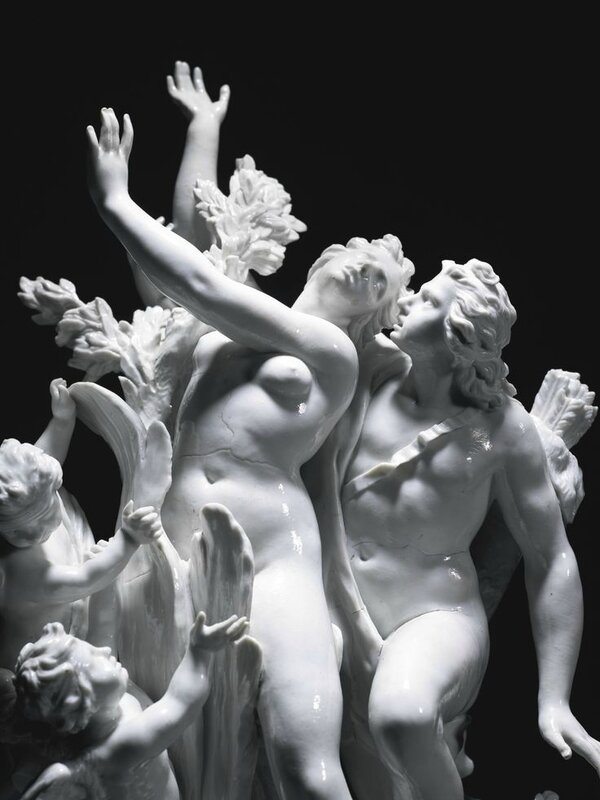

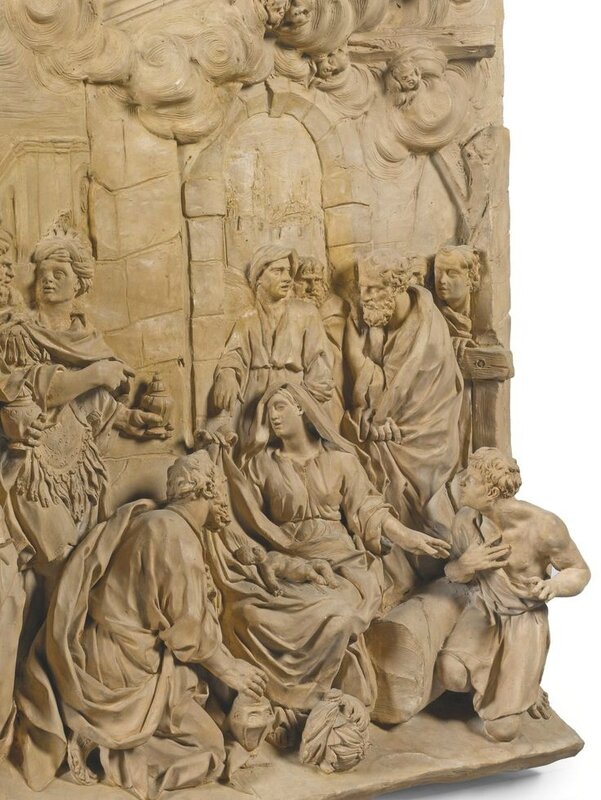
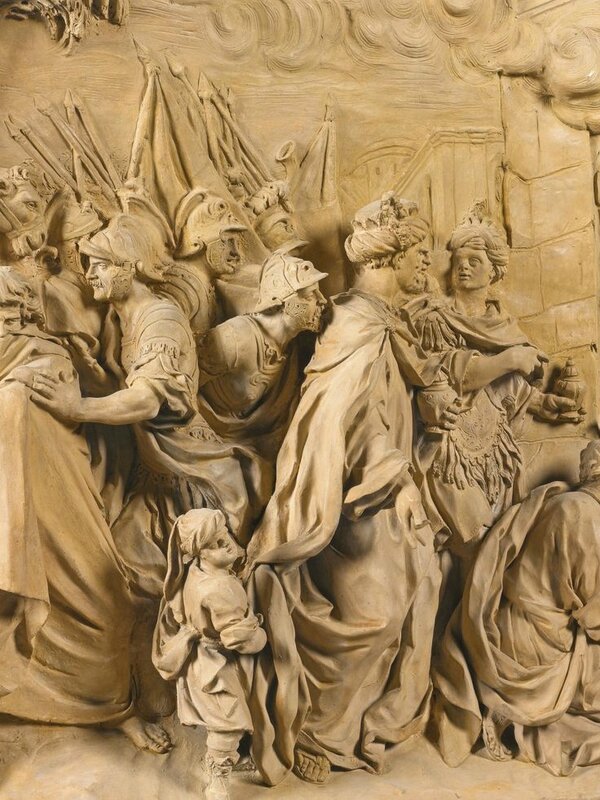
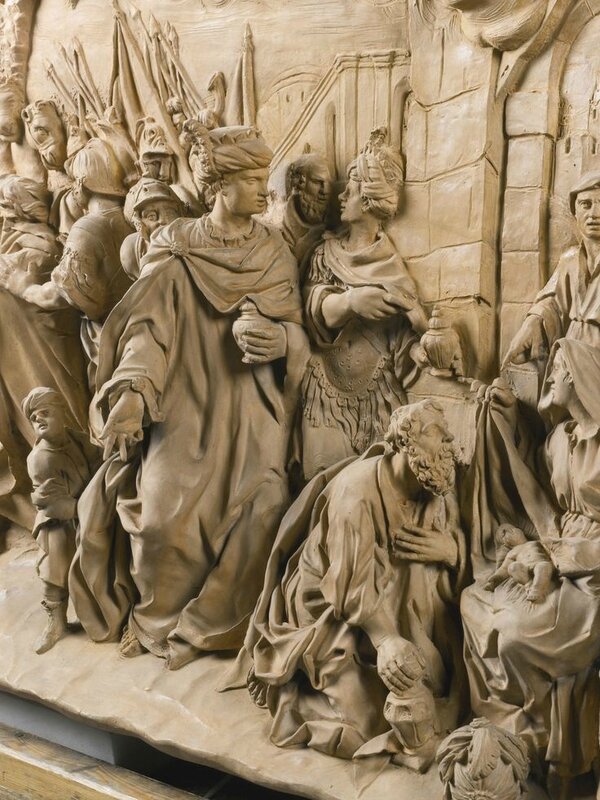
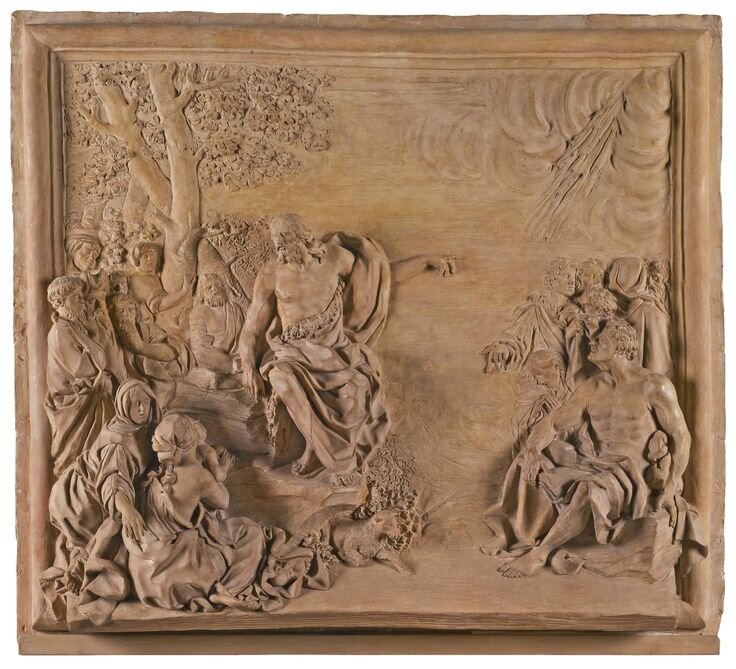
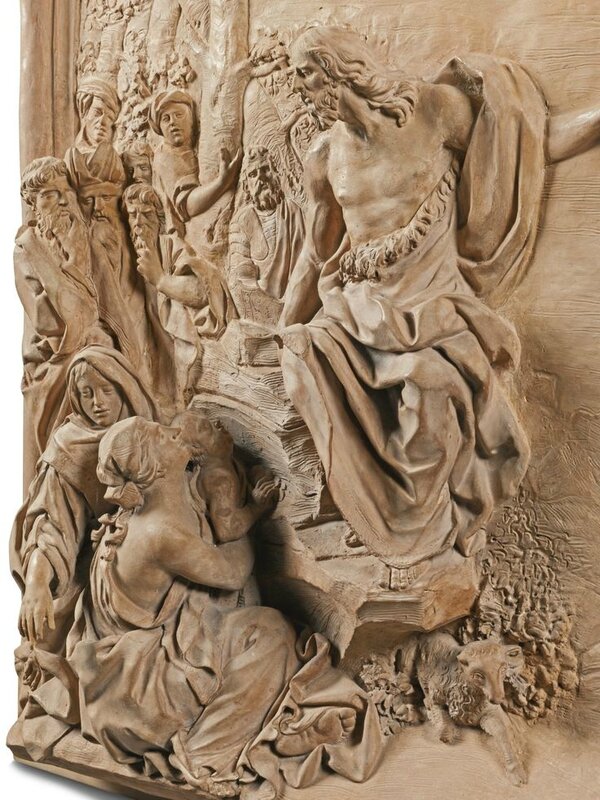
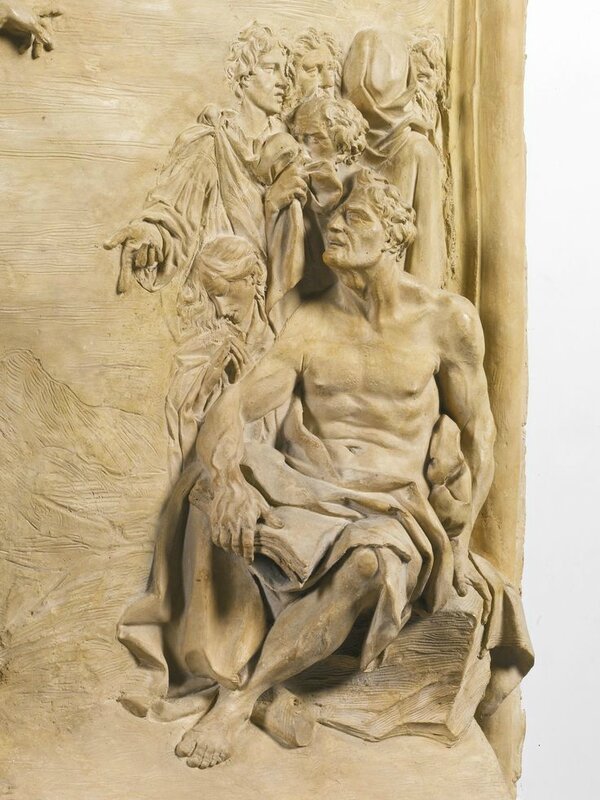




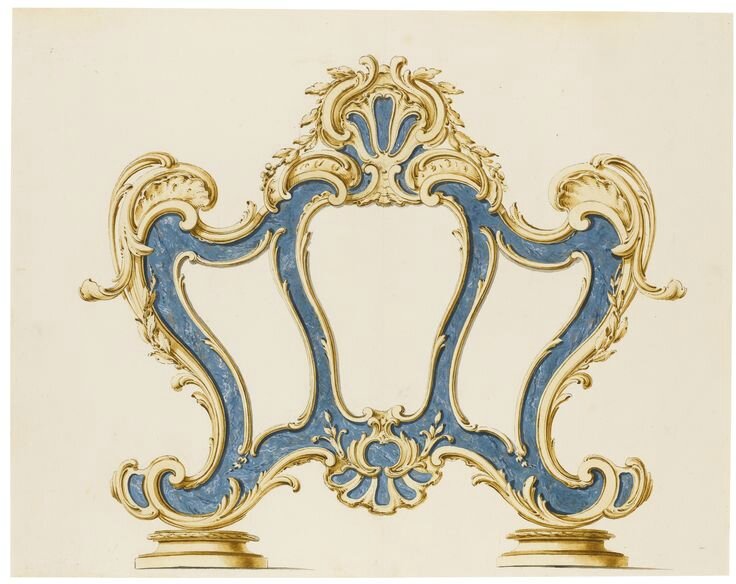

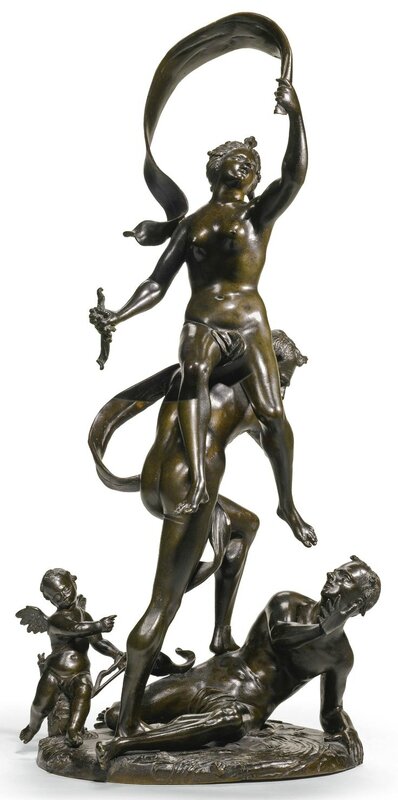



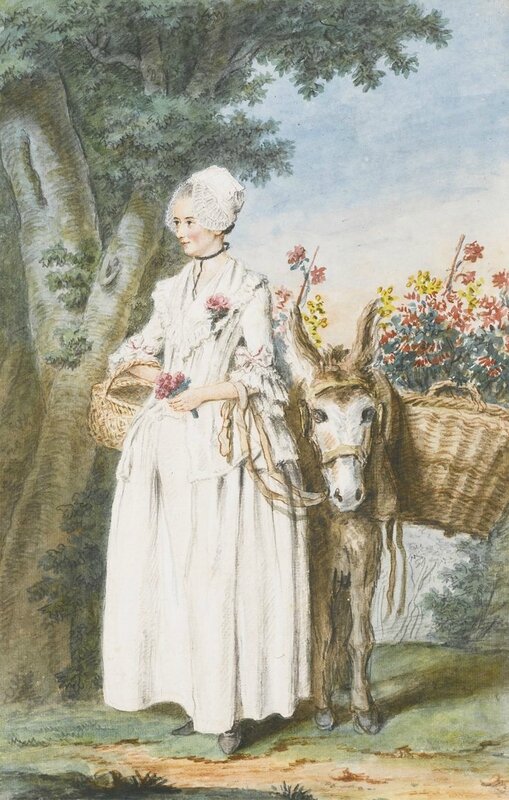




/http%3A%2F%2Fstorage.canalblog.com%2F91%2F84%2F119589%2F126222684_o.jpg)
/http%3A%2F%2Fstorage.canalblog.com%2F00%2F67%2F119589%2F122418951_o.jpg)
/http%3A%2F%2Fstorage.canalblog.com%2F40%2F78%2F119589%2F122387621_o.jpg)
/http%3A%2F%2Fstorage.canalblog.com%2F22%2F99%2F119589%2F122332091_o.jpg)